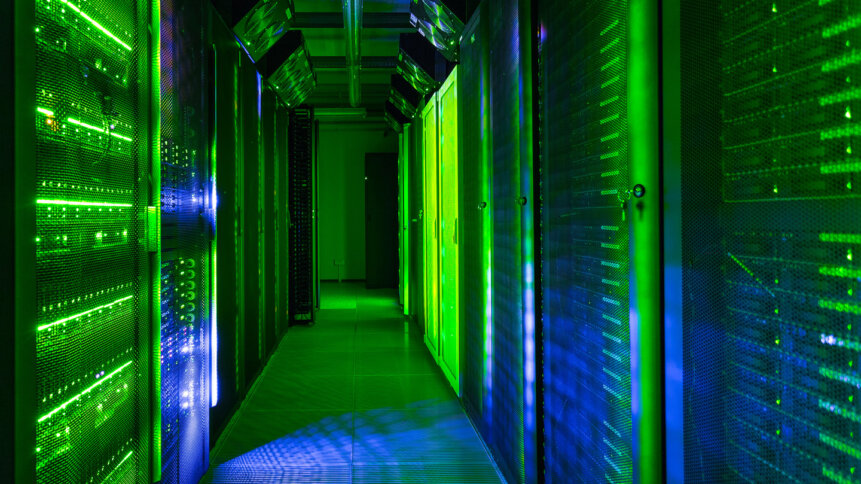Rock, meet hard place? The need for both more, and greener, data centers

If there’s one trend that’s becoming inescapable in data centers in 2023, it’s discussion of the need to balance increasing demand for data processing capacity with the need to render data centers as green – as ecologically sustainable – as possible.
The balancing act between the need for greater capacity and the need for greener capacity is delicate and crucial to establishing that a) we still have a planet to stand on, and b) our colossal technological revolution, with the likes of AI, machine learning and quantum computing, can still be fed.
We spoke to Tom Lawler, Executive Director of the Digital Climate Alliance to discuss the absolute necessity – and the ecological cost – of data centers in our society.
THQ:
Data centers – are they stuck between a rock and a hard place?
TL:
I think they aren’t quite there – yet – but we can see the walls starting to close in. And that’s one of the reasons we recently put a white paper out there (Sustainable Data Centers: Powering the Digital Revolution), to get ahead of this issue of sustainable data centers.
Data centers are increasingly everywhere. Bitcoin mining has started to get a lot of attention in terms of its resource-intensity. And, you know, there’s plenty of folks that would love to have the debate about whether a Bitcoin mining operation is a data center or not. Which is kind of like trying to ask whether an Xbox is a computer or not. It’s got a CPU, it’s got a hard drive, it’s got connectivity, but it is just a very explicit place, a very small niche in terms of what type of computing it does.
In a similar way with data centers, it depends on what criteria you use, y’know? Does this thing fit into that box? It’s a blurry line, so people are starting to realize the resource-intensity of these kinds of high compute applications. This is the beginning, this is the tip of the spear, and people are going to realize that there are some much, much bigger operations out there that are using high resource-intense compute a lot more.
That’s a niche example, but the idea permeates across the qualitative domain – some people value a Bitcoin highly, some people value a cat video on demand highly, all people value a machine learning algorithm trying to cure a dread disease extremely highly, and so on. But it all comes down to resources used in a resource-constrained environment, and resource-intensity is definitely becoming a bigger challenge.
The way of water.
In the US and the West, there are a lot of water issues. And the way that data centers are becoming more and more necessary to our daily lives, they are not just a place for us to have our pictures in the cloud, it’s about us doing anything in finance, and economy, and schooling, and public health. It’s becoming a fundamental underpinning of our society, a critical technology. We’re at a place now where we can’t live without data centers. But we still need to figure out how to live with them.
We’re not there yet in terms of a rock and a hard place. But if we don’t get ahead of this, and if we don’t start thinking about what the next generation of data centers are going to be, you’re going to start running into rocks and hard places a lot more.
There was a case just recently in London, where the decision was whether to build a housing development or a data center – because resource-intensity means you can’t have both.
That’s our intent with our new white paper – to start this conversation and try to get ahead of it.
THQ:
Right – because there’s no putting the data center genie back in its bottle. The entire world now runs on a cloud basis, as you said. But also, the high resource demand is real and inescapable. So something has to give, no?
The backup problem.
TL:
Well, something’s got to give, or we’ve got to.There was a case in Northern Virginia, just in the past couple of months, where someone proposed to build a large hyperscale facility out in Northern Virginia, where all the others are – there are hundreds of data centers out in Northern Virginia – and the local power company said “We cannot guarantee that you will have power on high demand days, whether it’s a storm or just really hot or really cold.”
So the applicant said, “All right, well, then we’ll have to have backup generators, because we need that guarantee of power, and we’re going to ask Virginia to give us a variance for our air quality, so that if we need to run them, we can.”
THQ:
With our “Humanity for Dummies” manual in hand, we can guess what happened next…
TL:
Exactly. Every other data center raised their hands and said, “Wait, hang on, we want that same variance, and if you give the variance to one but not all, you’re interfering with the market in favor of one competitor.”
Meanwhile, if the state of Virginia tried to grapple with the real-world consequences of this, you’d be talking about potentially 4,000 diesel generators running at one time, in one area, and diesel generators are… not especially known for their air quality benefits.
And so suddenly, you’re about to have ecological protestors, protesting the air quality impacts of the new data center. Now you have to think about it. And the moment you start to think about it, you realize you also have to think about what you’re going to do with all the water. And so on, and so on.
THQ:
The problem of whole-issue cost, rather than straightforward bottom line cost.
The good-ish news.
TL:
Right. We had a small conference last week, and the issue was clarified into four problems for a data center. 1 – where are you getting your electrons from? 2 – how are you getting your electrons? 3 – can you get the electrons you think you need? And 4 – the big water issues. Where are you getting your water? What kind of water is it? What happens to the water afterwards?
Then there’s also an afterlife issue – what do you do with the equipment when you upgrade? What are your afterlife ideas about the e-waste? All those things have to be a part of the calculus when you’re planning a new data center – and planning where to put one, too.
There’s good-ish news, though. When you start thinking about these issues, you start generating innovative solutions. In that North Virginian example, it turns out you don’t need all those polluting diesel generators.
You can build a micro-grid that provides an even higher level of resiliency and reliability and doesn’t pollute the atmosphere. You can pull that power from lots of sources, be it batteries, be it geothermal energy, or wind power, or hydropower. You can mix and match whatever energy sources are most effective, efficient and non-polluting in the place where you decide to site your data center – and feed them all into the micro-grid. Diesel pollution problem solved.
And then with the water questions, there are so many interesting things happening in terms of using water effectively.
Did you know you can build a data center in a way that makes it essentially a cooling tower? So it’s just that the water’s going through the system, being really condensed and just using the water for its heat transfer, and not actually using up the water.
THQ:
We… did not know that.
TL:
Exactly. Too few people do.
And that’s the point. There are some fantastic innovations taking place. It’s just that people are asking “Do I have to do that?” And now, at this point, yeah, you do.
In Part 2 of this article, we’ll explore more of these innovations – and where the levers of change are: in the hearts and souls of data center businesses, or lurking in their wallets and bottom lines.










